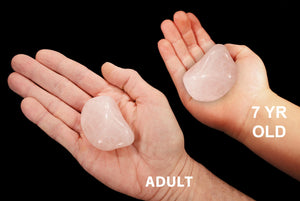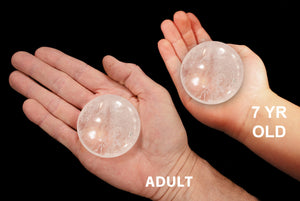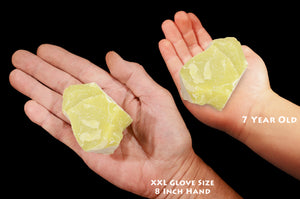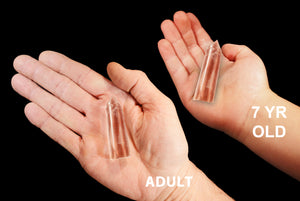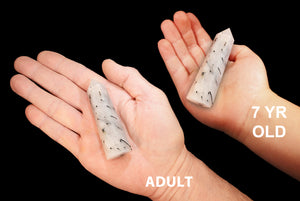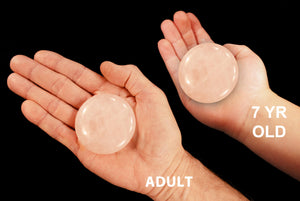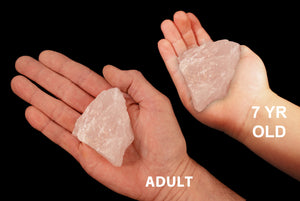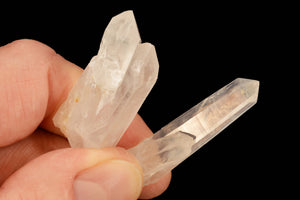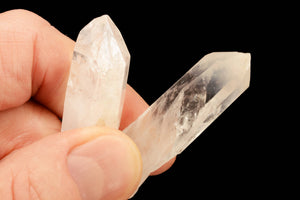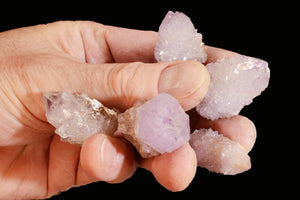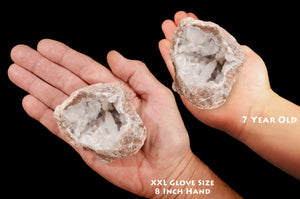- Home
- Rose Quartz Heart 1 1/2" Heart Chakra
Rose Quartz Heart 1 1/2" Heart Chakra
You will receive one rose quartz polished heart that is 1 1/2 inch wide by 1 3/4 inch tall by 3/8 inch thick weighing 2 ounces.
Bulk Purchase Listing
You are buying one rock from the lot shown in the photographs. Listing every rock separately adds a lot in labor costs. We pass that savings on to you with lower prices and higher quality than the competition. 75% of all of our Reviews are from customers amazed by what they received buying our bulk purchase listing products!
What Do Customers Say About Kidz Rocks?
High quality beautiful stones, super fast shipping, generous size specimens bigger and better than I expected, great prices, packed well, you will be wowed and impressed, couldn't be happier, great communication, excellent service, will definitely order again. (Actual Quotes From Our Customers)
At Kidz Rocks You Get More!
Larger rocks, lower prices, best service and a FREE surprise specimen in every order. Also 10% off any 5 or more items and maximum $7.00 shipping no matter how many rocks are on your order!
Healing Properties
Rose quartz is often called the "Love Stone." It's energetic hallmark is that of unconditional love that opens the heart chakra. This makes rose quartz a stone for every type of love: self-love, family, platonic, romantic, and unconditional. As a variety of quartz, rose quartz has high energy, and this strong energy can enhance love in virtually any situation. This stone of unconditional love that opens the heart chakra to all forms of love: self-love, family love, platonic love, and romantic love. The high energy of quartz gives rose quartz the property of enhancing love in virtually any situation. Bringing love in to life and daily situations not only brings inner warmth, but it also lowers stress and soothes those around it. Rose quartz is a very happy and loving stone. In the psychic and spiritual realms, rose quartz is often used to attract love, for love spells and charms. It is also used to ease the process of transition in dying to make the transition gentle and surrounded by the unconditional love of the Divine. Rose quartz can also be helpful for dream recall and dream work. Rose quartz is used to raise self-esteem and a strong sense of self-worth. Its loving energies teach us to apply this love to ourselves and thereby find ourselves more worthy.
Mineral Description
Rose quartz is a type of quartz which exhibits a pale pink to rose red hue. The color is usually considered as due to trace amounts of titanium, iron, or manganese, in the massive material. Rose quartz crystals are very rare which is a curiosity because quartz crystallizes into well-formed crystals and is common to find in all its other varieties. So amazing are the rose quartz crystals that the first ones discovered were dismissed as fakes by mineralogists from around the world. There are many different varieties of quartz, several of which are semi-precious gemstones. Especially in Europe and the Middle East, varieties of quartz have been since antiquity the most commonly used minerals in the making of jewelry and hard stone carvings. Quartz is the hardest of common minerals. Only rare minerals, such as diamonds, are harder than quartz.
 |
Kidz Rocks"The Best Value On The Internet" |
Our promise is to redefine what it means to shop for rocks and minerals online. NO insane high prices, NO great piece one time and then a disappointing piece next time, NO rocks that look big online and then a tiny piece shows up, NO waiting a long time for shipping.
A partnership you can trust with each and every order that you will be pleased if not amazed when you open your package! Always high quality, Always larger sizes at lower prices, Always exactly what it says it is, Always a positive and fun experience. Those of you that shop with us again and again know we are serious about our commitment to you.
We have 3 objectives when we source a new product to sell. Larger size, higher quality and lower price. All of our products meet 2 of those objectives and most of them meet all 3. If it is not a specimen we would add to our own prized collection, we don't ship it out to you!
When you buy from Kidz Rocks you will be thrilled with each and every purchase or your money back and you keep the rock!
Shipping Outside The USA
If you live outside the USA please shop on our Ebay store which does offer international shipping. CLICK HERE to go to our Ebay store.
Contact Information
Please feel free to call us at 1-818-518-6278 day or evening for wholesale volume discounts, special needs orders or for other requests you may have. We love talking to our customers!
Shipping
Our store never charges more than $7.00 shipping no matter how many rocks are on your order! We ship USPS First Class or USPS Priority Flat Rate depending on the size of your order. We ship all orders the same day you placed your order. We wrap every rock in high quality white foam to protect the rocks in shipment.
Return Policy
If you are not thrilled by your purchase simply call or email us for a full refund and your keep the rocks! If it was an expensive specimen we may send you a pre-paid return shipping label to send it back to us.
Our Listing Photographs
What you see IS what you get at Kidz Rocks! Besides using high quality Nikon lenses, we use 4500 color temperature 100 CRI lighting. 4500 temperature being the closest to natural light and CRI being Color Rendering Index or a light sources ability to faithfully render the colors. Solux is the only company that makes a full 100 CRI bulb. The adult hand in the photos is my hand and I have a very large hand measuring 8 inches from wrist to finger tip.
Disclosures
While many stores do not disclose treatments done to certain types of minerals after they are mined, we disclose all treatments in our listing descriptions. If the product listing does not say it was treated then it is a 100% natural rock just as it came out of the ground. Treatments are not always something to shy away from as some do. Many treatments simply reproduce the exact same process that mother nature uses and/or cleans the specimen so it may be enjoyed.
Related Products
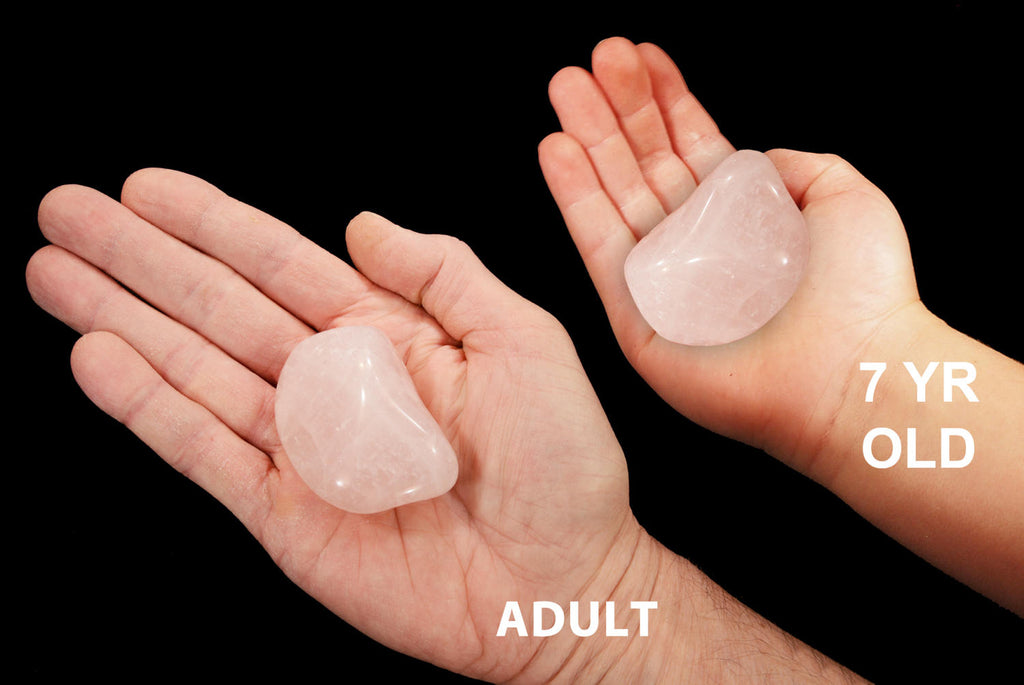
Rose Quartz Crystal 1 1/2" Tumbled Polished Heart Chakra
$4.99
These tumbled polished rose quartz crystals are not the small 3/4 inch tumbled stones everyone else sells. These are large tumbled stones that we have custom made for us by our Brazilian supplier. These are also properly tumbled stones. They are tumbled just enough to create a polish but while still retaining the original unique shape and charac...
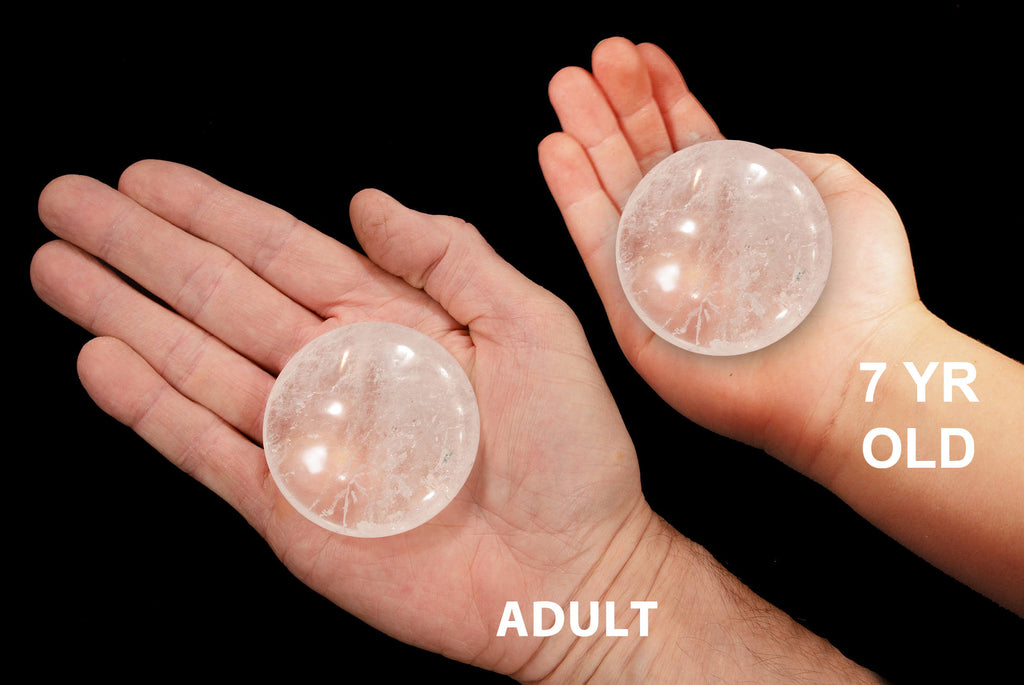
Quartz Crystal Palm Stone 2 1/2" Crown Chakra
$19.95
These are PROPERLY SHAPED PALM STONES. Others sell "palm stones" that are flat and random shapes and NOT palm stones at all. A correctly shaped palm stone is round and thick in the center with a nice arched curved shape from the center to the edges. It fills a cupped "palm", hence the name "palm stone". The sloping curved face properly contacts ...
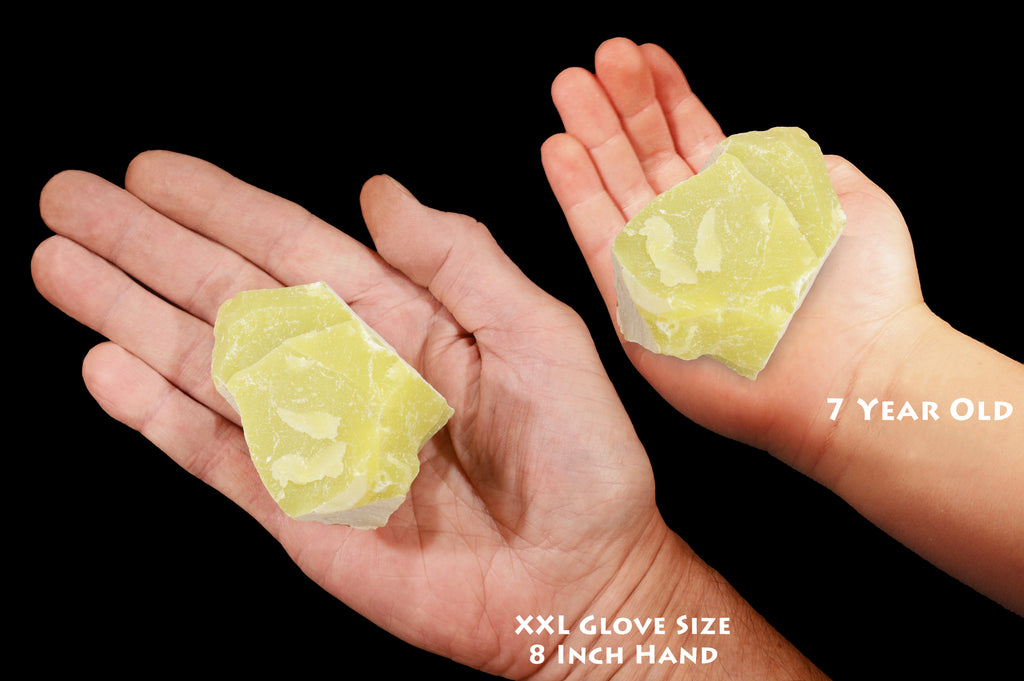
Lemon Quartz 3 1/2" 8-12 Oz Solar Plexus Chakra
$12.99
This high quality lemon quartz is mined from the Minas Gerais region of Brazil which is world-famous for the quality of its quartz. This is NOT the facet gem quality quartz used to make lemon quartz gemstones for jewelry which is a form of heat treated quartz. This lemon quartz is natural just as it came out of the ground.You will receive one le...
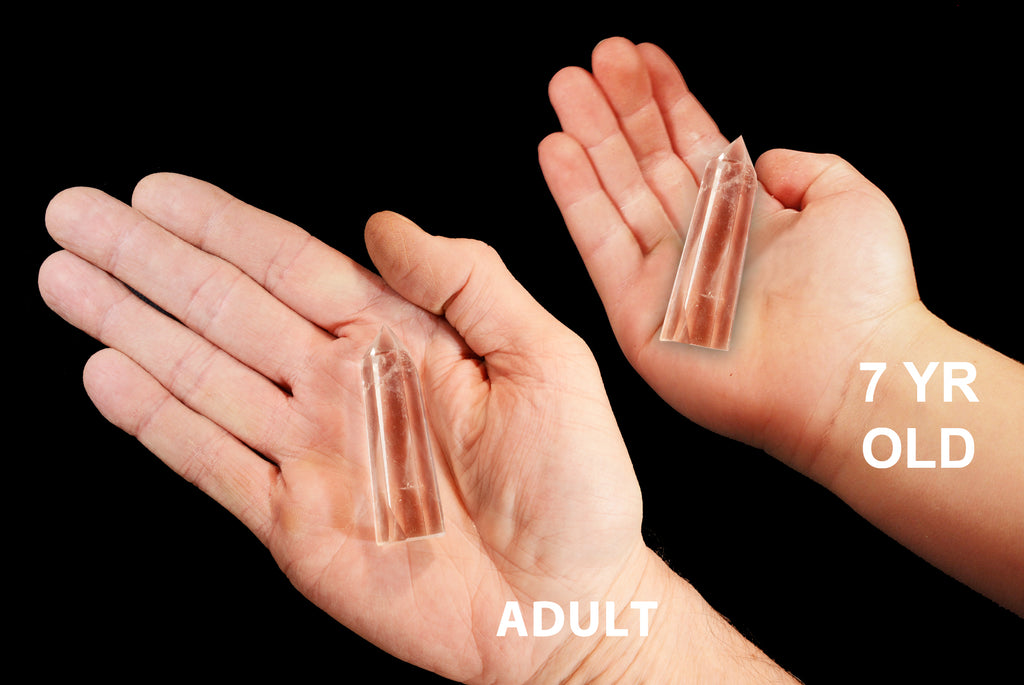
Clear Quartz Crystal 2 3/4" All Chakra Healing Crystal
$6.99
Highly polished Clear Quartz points imported from Brazil. Exceptional quality and workmanship.You will receive one crystal from the lot shown in the photos that is 2 1/2 inch to 2 3/4 inch by 3/4 inch thick and weighs 2 ounces.Bulk Purchase ListingYou are buying one rock from the lot shown in the photographs. Listing every rock separately adds a...
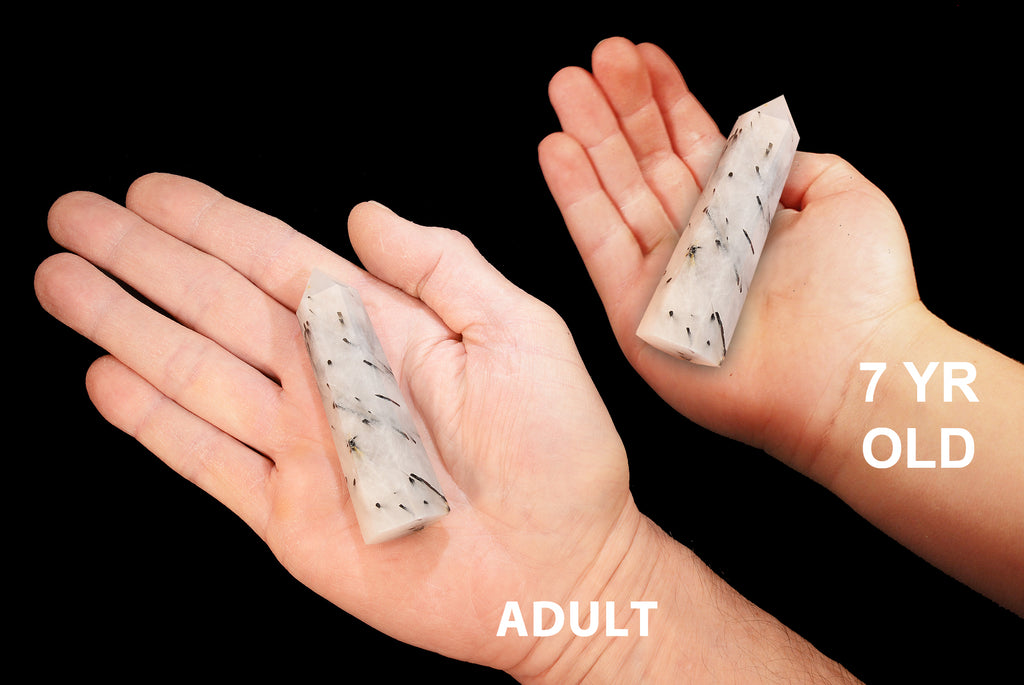
Black Tourmaline Quartz Crystal Wand 3" Multi Chakra
$8.99
Tourmilated Quartz is clear or white quartz which has naturally occurring needle-like inclusions of Black Tourmaline. These polished crystals were imported from Brazil. The quality of this type of crystal is determined by how clear the quartz is and how many tourmaline needles are in each crystal as well as the workmanship to cut and polished th...
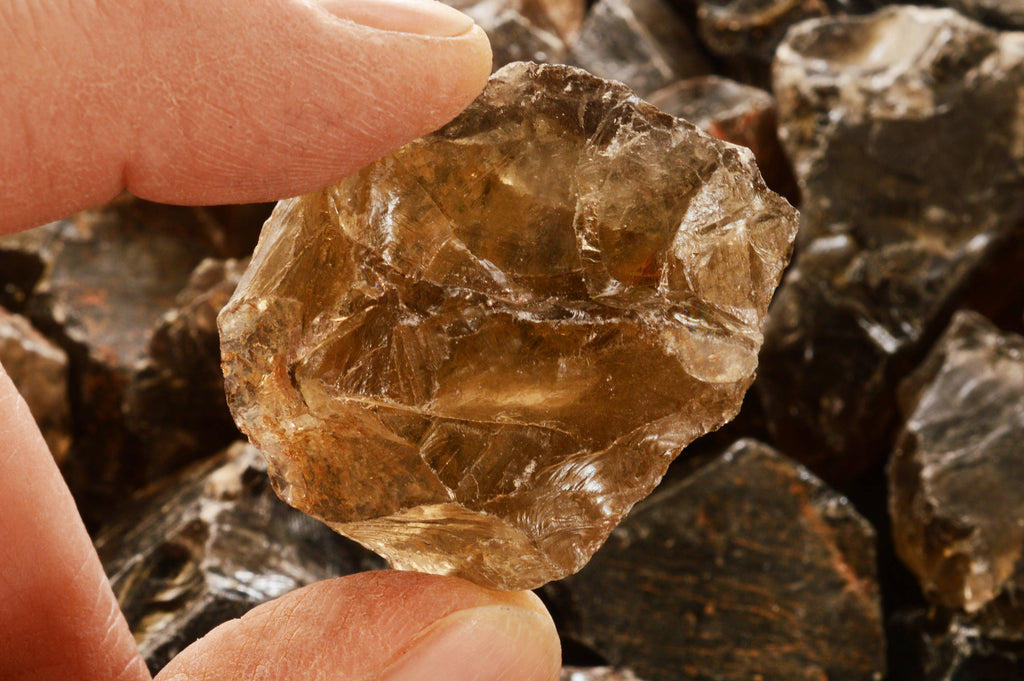
Smoky Quartz 3/4" Set of 6 Root Chakra
$4.99
This is NATURAL untreated smoky quartz imported by Kidz Rocks from Brazil. Some of these are facet grade with gorgeous transparency and no fractures! Heat treated smoky quartz is dark black are almost never translucent. For every quantity of 1 you will receive 6 smoky quartz crystals from the lot shown in the photos that are 3/4 inch to 1 inch a...
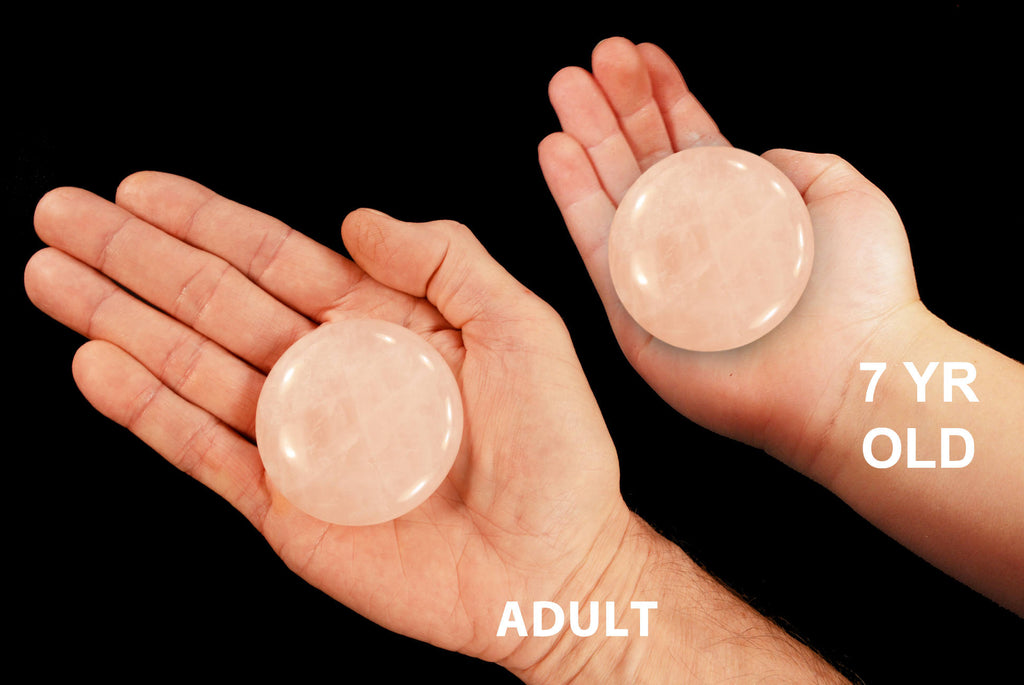
Rose Quartz Palm Stone 2 1/2" Heart Chakra
$19.95
These are PROPERLY SHAPED PALM STONES. Others sell "palm stones" that are flat and random shapes and NOT palm stones at all. A correctly shaped palm stone is round and thick in the center with a nice arched curved shape from the center to the edges. It fills a cupped "palm", hence the name "palm stone". The sloping curved face properly contacts ...
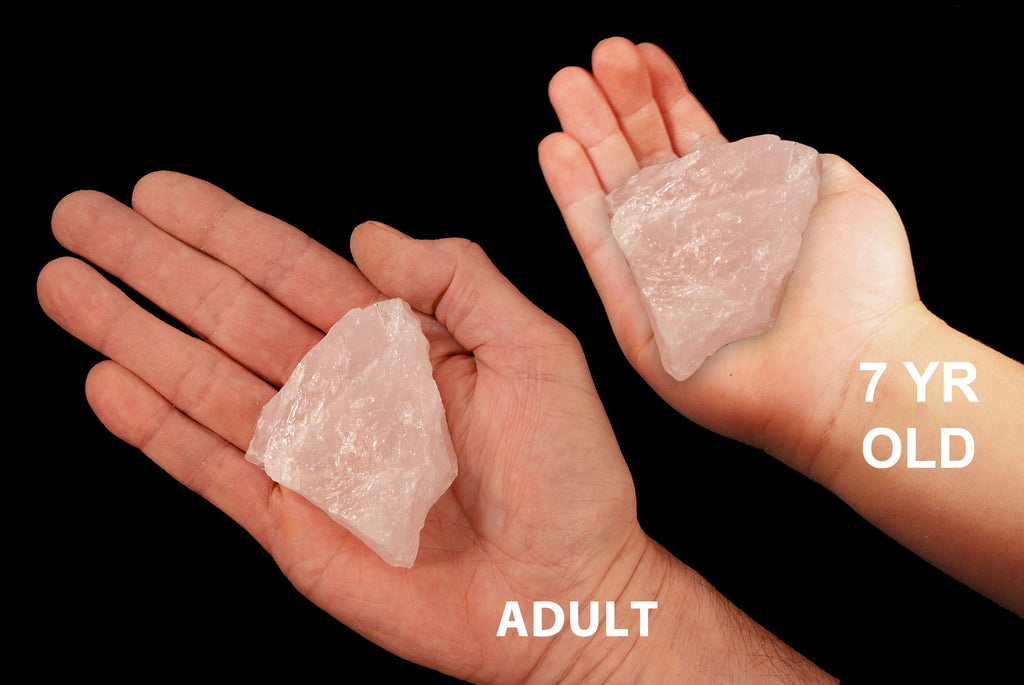
Rose Quartz Crystal 2 1/2" 4-7 Oz Heart Chakra
$6.99
This rose quartz is imported from Madagascar and it very high quality glassy rose quartz. High quality semi translucent rose quartz is a lighter pink color because of the translucency. It is also lightly tumbled to remove the razor sharp edges that are common after mining rose quartz.You will receive one specimen from the lot shown in the photos...
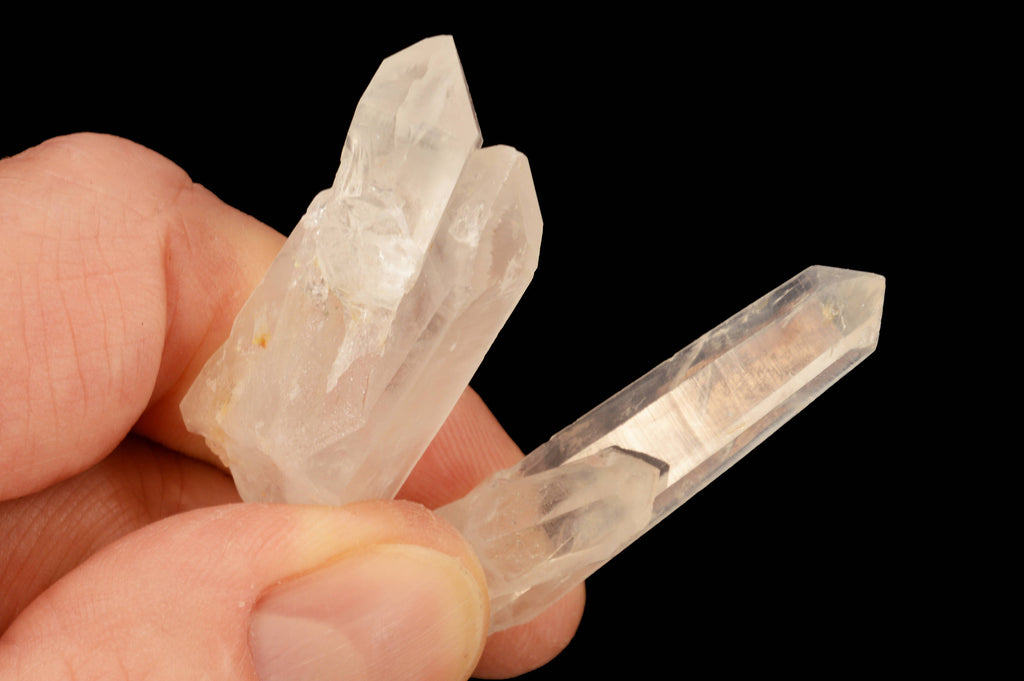
Quartz Crystal 1 1/2" Set of 4 Points All Chakras #4
$4.99
These quartz crystals are from Mount Ida, Arkansas. These are multiple crystals on each specimen. Some have a second or third small crystal across the top, some on the bottom - every possible combination you can imagine. For every quantity of 1 you will receive FOUR quartz crystal points that are 1 1/2 inch to 2 inches long and 1/4 inch to 3/4 i...
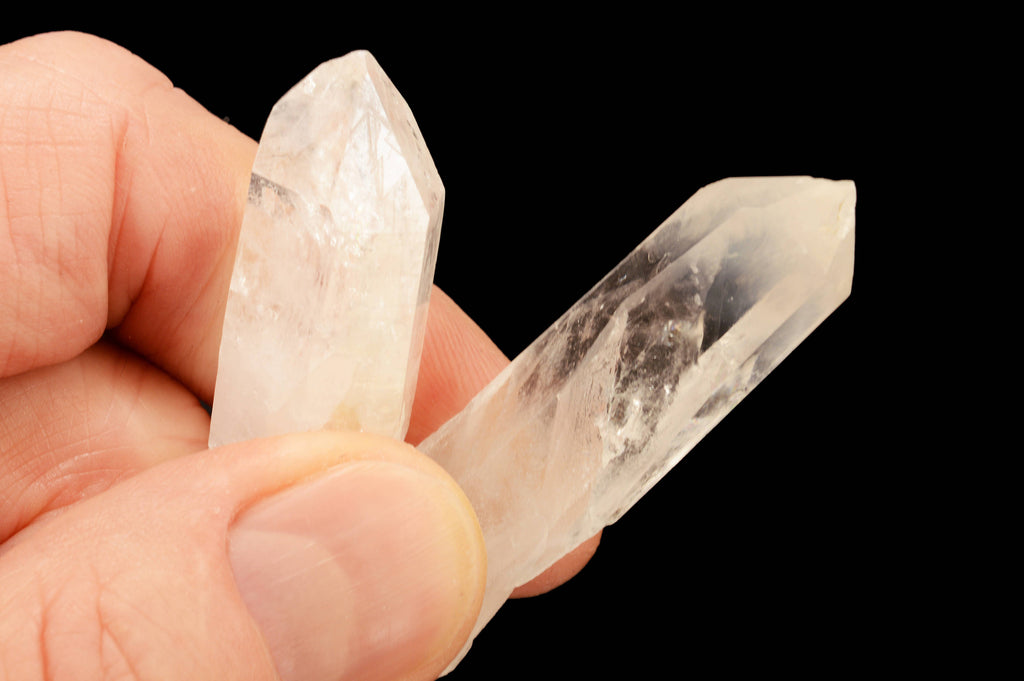
Quartz Crystal 1 1/2" Set of 4 Points All Chakras #2
$4.99
These quartz crystals are from Mount Ida, Arkansas. For every quantity of 1 you will receive FOUR quartz crystal points that are 1 1/2 inch to 2 inches long and 1/2 inch to 3/4 inch wide. Bulk Purchase ListingYou are buying four rocks from the lot shown in the photographs. Listing every rock separately adds a lot in labor costs. We pass that sav...
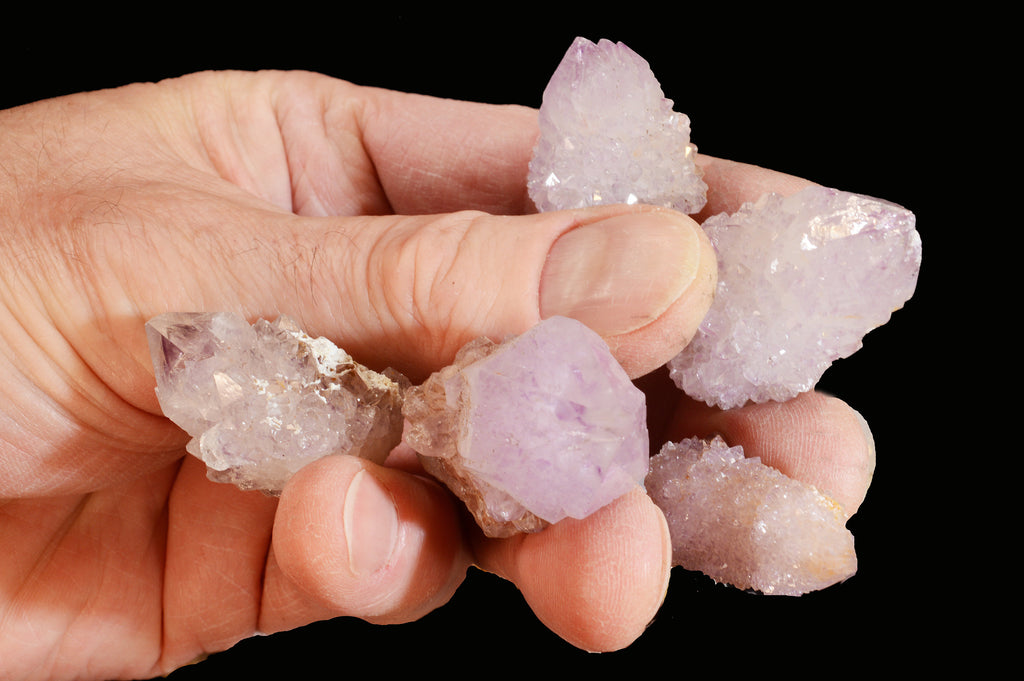
Lilac Spirit Cactus Quartz 1" Crown Chakra
$11.95
These gorgeous lilac cactus spirit quartz clusters are imported by Kidz Rocks from the Kwandebele, Magelisburg, South Africa region famous for the very best spirit/cactus quartz crystals. The lilac color is the less common variety and is prized the most among the cactus quartz colors because of its unique beauty.You will receive the one crystal ...
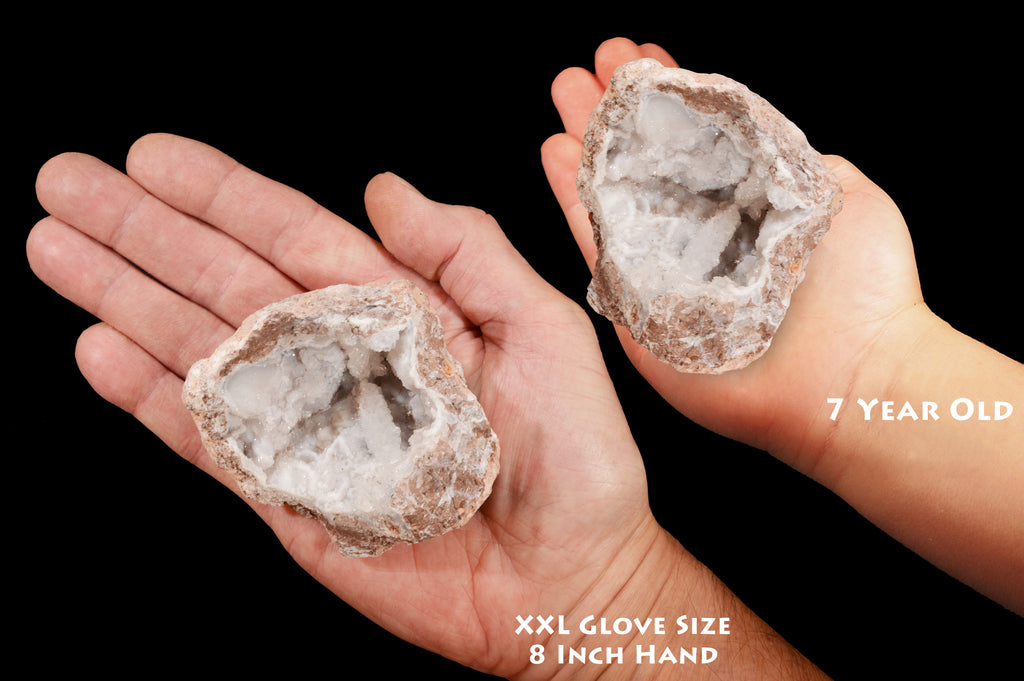
Sonora Geode 3" 5-8 Oz Crown Chakra
$6.99
These Mexican Sonora Crystal geodes are a fairly new geode type from Mexico and contain sparkly to drusy clear quartz interiors.You will receive one specimen from the lot shown in the listing photos that is 3 inch to 3 1/2 inches and weighing 5 to 8 ounces. Bulk Purchase ListingYou are buying one rock from the lot shown in the photographs. Listi...




